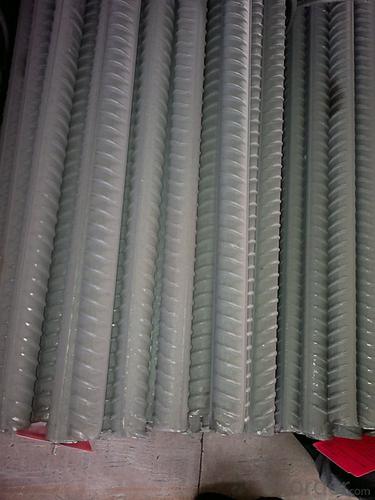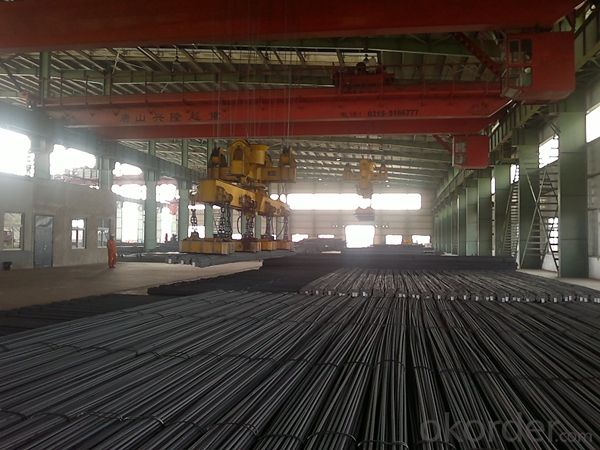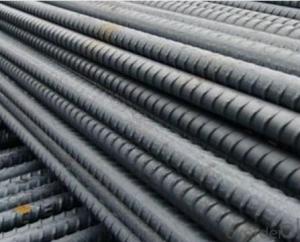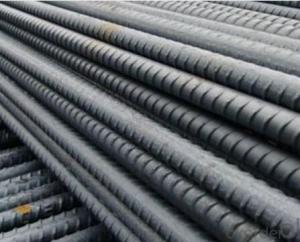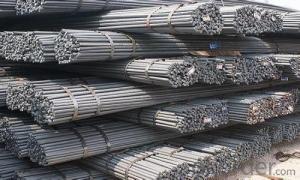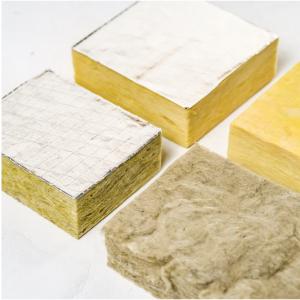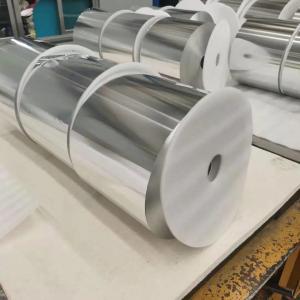Reinforced Steel Bar - Hot Rolled BS4449 Standard Deformed Steel Rebars for Construction
- Loading Port:
- Tianjin
- Payment Terms:
- TT OR LC
- Min Order Qty:
- 25 m.t.
- Supply Capability:
- 200000 m.t./month
OKorder Service Pledge
OKorder Financial Service
You Might Also Like
Product Description:
OKorder is offering Hot Rolled GB Standard Deformed Steel Rebars for Construction at great prices with worldwide shipping. Our supplier is a world-class manufacturer of steel, with our products utilized the world over. OKorder annually supplies products to European, North American and Asian markets. We provide quotations within 24 hours of receiving an inquiry and guarantee competitive prices.
Product Applications:
Hot Rolled GB Standard Deformed Steel Rebars for Construction are ideal for structural applications and are widely used in the construction of buildings and bridges, and the manufacturing, petrochemical, and transportation industries.
1. Supporting members, most commonly in the house raising industry to strengthen timber bears under houses. Transmission line towers, etc
2. Prefabricated structure
3. Medium scale bridges
4. It is widely used in various building structures and engineering structures such as roof beams, bridges, transmission towers, hoisting machinery and transport machinery, ships, industrial furnaces, reaction tower, container frame and warehouse etc.
Product Advantages:
Hot Rolled GB Standard Deformed Steel Rebars for Construction are durable, strong, and resist corrosion.
Main Product Features:
· Premium quality
· Prompt delivery & seaworthy packing (30 days after receiving deposit)
· Corrosion resistance
· Can be recycled and reused
· Mill test certification
· Professional Service
· Competitive pricing
Product Specifications:
Our supplier is a world-class manufacturer of steel, with our products utilized the world over. OKorder annually supplies products to European, North American and Asian markets. We provide quotations within 24 hours of receiving an inquiry and guarantee competitive prices.
Product Applications:
High Quality Hot Rolled Equal Angle Steel Bars for Strcuture are ideal for structural applications and are widely used in the construction of buildings and bridges, and the manufacturing, petrochemical, and transportation industries.
1. Supporting members, most commonly in the house raising industry to strengthen timber bears under houses. Transmission line towers, etc
2. Prefabricated structure
3. Medium scale bridges
4. It is widely used in various building structures and engineering structures such as roof beams, bridges, transmission towers, hoisting machinery and transport machinery, ships, industrial furnaces, reaction tower, container frame and warehouse etc.
Product Advantages:
High Quality Hot Rolled Equal Angle Steel Bars for Constrcution are durable, strong, and resist corrosion.
Main Product Features:
· Premium quality
· Prompt delivery & seaworthy packing (30 days after receiving deposit)
· Corrosion resistance
· Can be recycled and reused
· Mill test certification
· Professional Service
· Competitive pricing
Product Specifications:
Specifications of Hot Rolled GB Standard Deformed Steel Rebars for Construction:
Standard | GB UK USA | HRB335 HRB400 HRB500 G460B, B500A, B500B,B500C GR40, GR60 | |
Diameter | 6mm,8mm,10mm,12mm,14mm,16mm,18mm,20mm, 22mm,25mm,28mm,32mm,36mm,40mm,50mm | ||
Length | 6M, 9M,12M or as required | ||
Packing | Export standard packing: wrapped by wire rod in bundles | ||
Each bundle weight | 2-3MT, or as required | ||
Trade terms | FOB, CFR, CIF | ||
Payment terms | TT payment in advance or Irrevocable LC at sight. | ||
Delivery Detail | within 45 days after received advanced payment or LC. | ||
Brand name | DRAGON | ||
Theoretical weight and section area of each diameter as below for your information:
Diameter(mm) | Section area (mm²) | Mass(kg/m) | Weight of 12m (kg) | Pcs/ton |
6 | 28.27 | 0.222 | 2.664 | 375.38 |
8 | 50.27 | 0.395 | 4.74 | 210.97 |
10 | 78.54 | 0.617 | 7.404 | 135.06 |
12 | 113.1 | 0.888 | 10.656 | 93.84 |
14 | 153.9 | 1.21 | 14.52 | 68.87 |
16 | 201.1 | 1.58 | 18.96 | 52.74 |
18 | 254.5 | 2.00 | 24 | 41.67 |
20 | 314.2 | 2.47 | 29.64 | 33.74 |
22 | 380.1 | 2.98 | 35.76 | 27.96 |
25 | 490.9 | 3.85 | 46.2 | 21.65 |
28 | 615.8 | 4.83 | 57.96 | 17.25 |
32 | 804.2 | 6.31 | 75.72 | 13.21 |
36 | 1018 | 7.99 | 98.88 | 10.43 |
40 | 1257 | 9.87 | 118.44 | 8.44 |
50 | 1964 | 15.42 | 185.04 | 5.40 |
Chemical Composition: (Please kindly find our chemistry of our material based on JIS as below for your information)
JISG3112 SD390 | Chemical Composition | ||||
C | Mn | Si | S | P | |
0.22 | 1.38 | 0.4 | 0.014 | 0.022 | |
Physical capability | |||||
Yield Strength(N/cm²) | Tensile Strength(N/cm²) | Elongation (%) | |||
620 | ≥400 | 21 | |||
Usage and Applications of Hot Rolled GB Standard Deformed Steel Rebars for Construction:
Deformed bar is widely used in buildings, bridges, roads and other engineering construction. Big to highways, railways, bridges, culverts, tunnels, public facilities such as flood control, dam, small to housing construction, beam, column, wall and the foundation of the plate, deformed bar is an integral structure material. With the development of world economy and the vigorous development of infrastructure construction, real estate, the demand for deformed bar will be larger and larger..
Packaging & Delivery of Hot Rolled GB Standard Deformed Steel Rebars for Construction:
Packaging Detail: products are packed in bundle and then shipped by container or bulk vessel, deformed bar is usually naked strapping delivery, when storing, please pay attention to moisture proof. The performance of rust will produce adverse effect.
Price: Keep lower operating costs so as to offer competitive price for our clients
Deformed Steel Rebars according to Korean standard
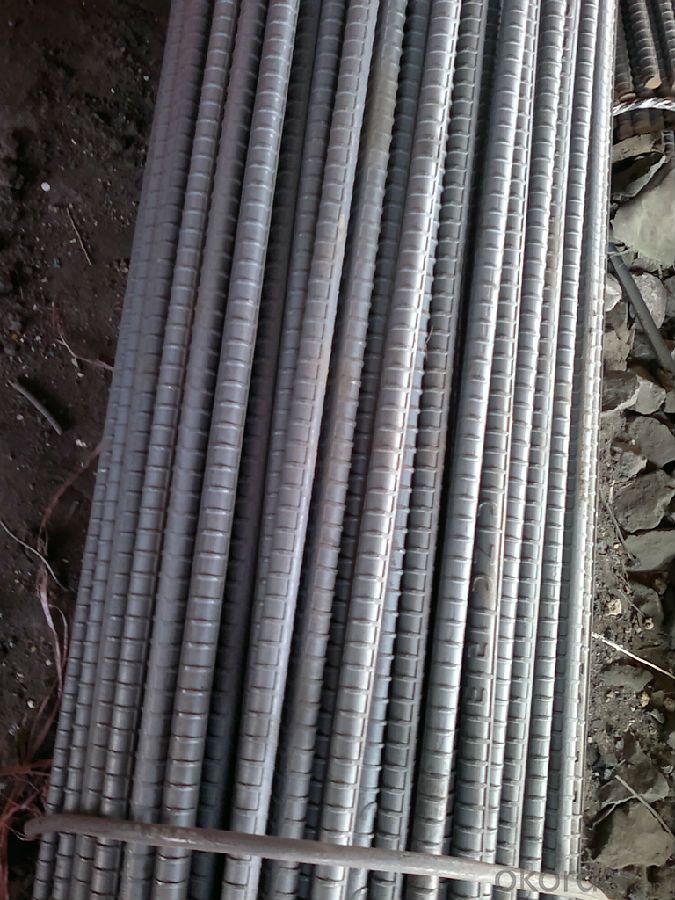
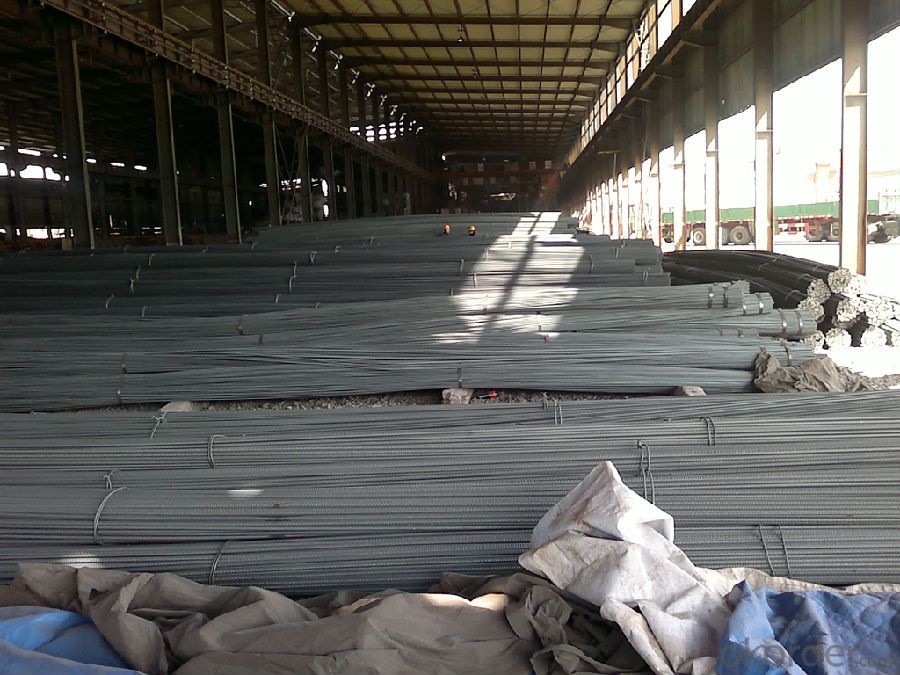
Note:
1. Our products are produced according to national standard (GB), if not, supply according to national standards (GB) or agreement as customer required.
2. Other Grade and Standard Deformed Steel Bar we can supply:
Grade: GR40/GR60, G460B/B500A/B500B/B500C,BST500S
Standard: ASTM, BS, DIN
The Minimum Order Quantity of these products is high, and need to be confirmed.
3. We can not only supply Deformed Steel Bar; if you need anything about building materials, please contact us for further information.
4. Please send us your detail specifications when inquire. We will reply to you as soon as possible. We sincerely hope we can establish a long stable business relationship.
- Q:How are steel rebars protected from rusting during storage?
- Steel rebars are protected from rusting during storage through various methods such as applying a protective coating or using corrosion inhibitors. Additionally, rebars may be stored in dry and controlled environments to minimize exposure to moisture and oxygen, which are the primary factors that cause rusting.
- Q:Can steel rebars be used in offshore platform construction?
- Yes, steel rebars can be used in offshore platform construction. They are commonly used as reinforcement in concrete structures, providing strength and durability to withstand the harsh offshore environment and support the weight and loads of the platform.
- Q:What is the difference between carbon steel and stainless steel rebars?
- The main difference between carbon steel and stainless steel rebars lies in their composition and corrosion resistance. Carbon steel rebars are made primarily of iron and carbon, while stainless steel rebars contain iron, chromium, and other alloying elements like nickel and molybdenum. Carbon steel rebars are more susceptible to corrosion compared to stainless steel rebars, especially in environments with high moisture or exposure to chemicals. Stainless steel rebars, on the other hand, have a higher resistance to corrosion due to the presence of chromium, which forms a protective oxide layer on the surface. This makes stainless steel rebars suitable for applications in harsh or corrosive environments, such as marine structures or concrete exposed to chloride ions. Additionally, stainless steel rebars have higher tensile strength and ductility compared to carbon steel rebars. This makes them more suitable for structural applications where high strength and durability are required. Overall, the choice between carbon steel and stainless steel rebars depends on the specific application and the level of corrosion resistance and strength needed.
- Q:What is the role of steel rebars in minimizing cracking due to shrinkage?
- The role of steel rebars in minimizing cracking due to shrinkage is to provide reinforcement and strength to concrete structures. By placing steel rebars within the concrete, they act as a framework that helps distribute the tensile forces caused by shrinkage. This prevents the concrete from cracking and ensures the overall stability and durability of the structure.
- Q:What are the guidelines for the proper anchoring of steel rebars in slabs?
- The guidelines for proper anchoring of steel rebars in slabs typically include ensuring adequate lap length, proper spacing, and adequate embedment depth. The lap length refers to the minimum length of overlap between adjacent rebars to ensure adequate bond strength. Proper spacing is important to ensure even load distribution and prevent cracking. Embedment depth refers to the depth at which the rebars are placed within the concrete to ensure sufficient anchorage and prevent pullout. Additionally, it is important to follow local building codes and consult structural engineering guidelines specific to the project to ensure proper anchoring of steel rebars in slabs.
- Q:How do steel rebars affect the overall weight of a concrete structure?
- Steel rebars play a vital role in reinforcing concrete structures and have a significant impact on the structure's weight. Typically made of carbon steel, which is renowned for its strength and durability, rebars provide tensile strength when combined with concrete. The addition of rebars increases the weight of a concrete structure, although the effect on the overall weight is relatively minimal compared to the advantages they offer. While the weight of rebars is significantly lower than that of concrete, their inclusion does contribute to the total weight. The primary purpose of rebars is to reinforce the concrete and ensure its ability to withstand the loads and stresses imposed on the structure. By distributing the tensile forces throughout the concrete, rebars prevent cracking and structural failure. As a result, they enable the construction of larger and more robust structures, including bridges, buildings, and highways. Although the weight of rebars increases the overall weight of a concrete structure, it is a necessary compromise for improved strength and durability. The additional weight from the rebars is typically insignificant compared to the weight of the concrete itself. Moreover, when considering the overall load-bearing capacity and structural integrity of the entire construction, the increased weight is often negligible. In conclusion, steel rebars have a minor impact on the overall weight of a concrete structure, but the benefits they provide are significant. By reinforcing the concrete, rebars ensure its structural integrity, durability, and the ability to construct larger, safer, and more resilient structures.
- Q:What is the impact of steel rebars on the overall maintenance of a building?
- Steel rebars have a significant impact on the overall maintenance of a building. These reinforcement bars provide structural strength and stability by enhancing the tensile strength of concrete. By preventing cracks and minimizing structural damage, steel rebars reduce the need for frequent repairs and maintenance. Additionally, their corrosion resistance properties enhance the longevity of the building, reducing maintenance costs and ensuring its structural integrity in the long run.
- Q:Can steel rebars be used in structures with high noise reduction requirements?
- Steel rebars can be used in structures with high noise reduction requirements, but they may not be the most effective solution on their own. Steel rebars, being a common construction material, do have some sound-dampening properties. However, their primary purpose is to provide reinforcement and strength to the structure rather than to reduce noise transmission. To achieve high noise reduction in structures, additional measures need to be taken such as using acoustic insulation materials or implementing specific design techniques. These may include the use of double walls, sound-absorbing panels, resilient mounts, and other specialized acoustic treatments. While steel rebars alone may not provide significant noise reduction, they can still contribute to overall noise reduction efforts when used in conjunction with other soundproofing techniques. It is advisable to consult with acoustic experts or engineers to determine the most suitable combination of materials and design strategies to meet the specific noise reduction requirements of a structure.
- Q:How are steel rebars protected against corrosion in aggressive environments?
- Steel rebars are protected against corrosion in aggressive environments by using various methods such as epoxy coatings, zinc coatings, and cathodic protection. These measures create a barrier between the rebar and the corrosive elements, preventing the steel from coming into direct contact with moisture and oxygen. Additionally, proper concrete cover and pH control in the surrounding environment can also contribute to the protection of steel rebars against corrosion.
- Q:How do steel rebars affect the workability of concrete?
- Concrete workability can be significantly impacted by the presence of steel rebars. Initially, steel rebars in concrete contribute to increased strength and structural integrity. They act as reinforcement by absorbing and redistributing tensile forces, preventing cracking or collapsing under load. However, the addition of steel rebars also has various effects on concrete workability. Firstly, it reduces the workability or slump of the concrete mix. Consequently, the concrete becomes less fluid and more challenging to handle, particularly during pouring and placement. The rebars create obstacles and impede the flow of concrete, demanding greater effort to properly place and compact the mixture. Moreover, steel rebars can lead to issues such as segregation and segregation of concrete. Segregation arises when the heavier rebars cause the aggregate to settle at the bottom, resulting in an uneven distribution of components in the mixture. This can negatively impact the concrete's strength and durability. Additionally, ensuring proper bond between the steel and concrete may require additional measures. Adequate cover depth and correct placement of rebars are crucial to fully embed the rebars in the concrete, providing the necessary reinforcement. Failing to achieve a proper bond can jeopardize the concrete's strength and structural integrity. In conclusion, steel rebars have both positive and negative effects on concrete workability. While they enhance the strength and durability of the concrete, they also reduce its workability and require additional considerations during the mixing and placement process. Effective planning and execution are necessary to incorporate the rebars efficiently without hindering the overall workability and performance of the concrete.
1. Manufacturer Overview |
|
|---|---|
| Location | |
| Year Established | |
| Annual Output Value | |
| Main Markets | |
| Company Certifications | |
2. Manufacturer Certificates |
|
|---|---|
| a) Certification Name | |
| Range | |
| Reference | |
| Validity Period | |
3. Manufacturer Capability |
|
|---|---|
| a)Trade Capacity | |
| Nearest Port | |
| Export Percentage | |
| No.of Employees in Trade Department | |
| Language Spoken: | |
| b)Factory Information | |
| Factory Size: | |
| No. of Production Lines | |
| Contract Manufacturing | |
| Product Price Range | |
Send your message to us
Reinforced Steel Bar - Hot Rolled BS4449 Standard Deformed Steel Rebars for Construction
- Loading Port:
- Tianjin
- Payment Terms:
- TT OR LC
- Min Order Qty:
- 25 m.t.
- Supply Capability:
- 200000 m.t./month
OKorder Service Pledge
OKorder Financial Service
Similar products
New products
Hot products
Hot Searches
Related keywords



